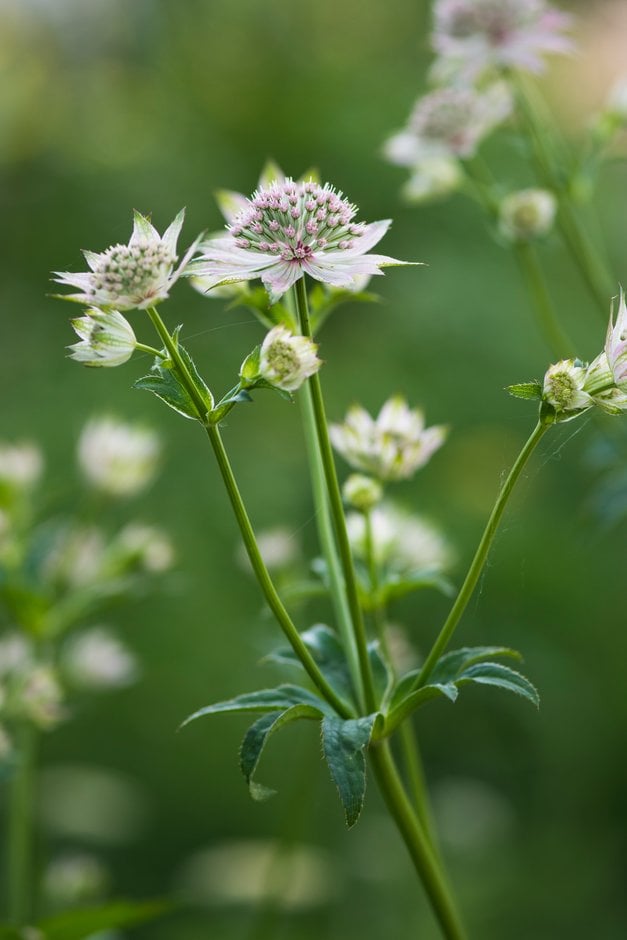Astrantia major 'Florence'PBR
masterwort 'Florence'
A herbaceous perennial to 80cm, with deeply divided leaves. Branched, upright stems bear pincushion heads of soft pink flowers, surrounded by bracts of the same colour with green tips, from early to late summer
Size
Ultimate height
0.5–1 metresTime to ultimate height
2–5 yearsUltimate spread
0.1–0.5 metresGrowing conditions
Moisture
Moist but well–drained, Well–drainedpH
Acid, Alkaline, NeutralColour & scent
| Stem | Flower | Foliage | Fruit | |
| Spring | Green | |||
|---|---|---|---|---|
| Summer | Pink | Green | ||
| Autumn | ||||
| Winter |
Position
- Full sun
- Partial shade
Aspect
South–facing or West–facing or North–facing or East–facing
Exposure
Exposed or Sheltered Hardiness
H7Botanical details
- Family
- Apiaceae
- Native to GB / Ireland
- No
- Foliage
- Deciduous
- Habit
- Bushy
- Genus
Astrantia are clump-forming herbaceous perennials with palmately lobed basal leaves and branched, erect, wiry stems bearing compact umbels of tiny flowers surrounded by a rosette of showy bracts
- Name status
Accepted
How to grow
Cultivation
Best grown in moist, fertile, preferably humus-rich soil in sun or part shade; drier conditions tolerated
Propagation
Propagate by division in spring
Suggested planting locations and garden types
- City and courtyard gardens
- Cottage and informal garden
- Wildlife gardens
- Cut flowers
- Flower borders and beds
- Underplanting of roses and shrubs
Pruning
Cut back after flowers have faded to tidy, and encourage a fresh flush of leaf growth
Pests
May be susceptible to astrantia leaf miner
Diseases
May be susceptible to powdery mildews
Get involved
The Royal Horticultural Society is the UK’s leading gardening charity. We aim to enrich everyone’s life through plants, and make the UK a greener and more beautiful place.
